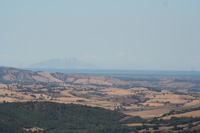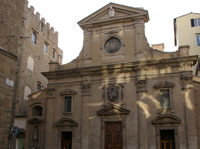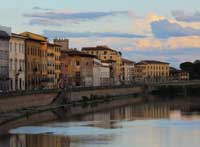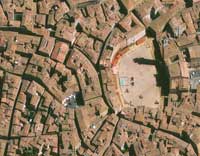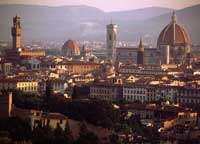|
| |
|
|
|
|
 |
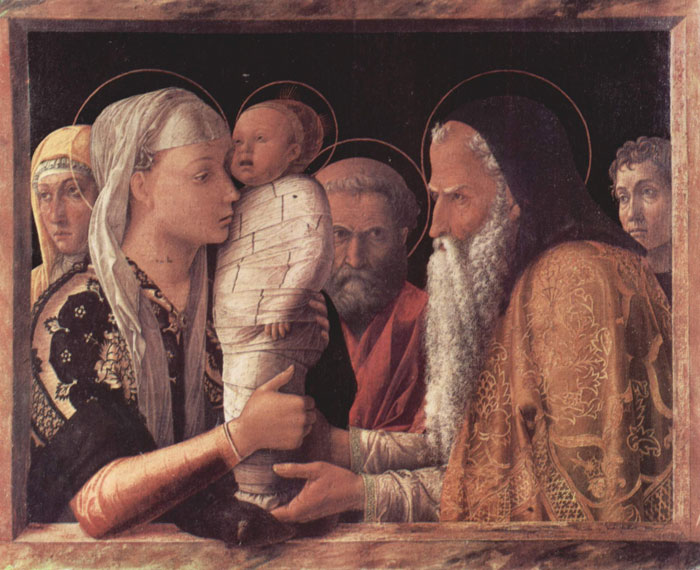 |
| |
Andrea Mantegna, Presentation in the Temple, c. 1460, tempera on wood, 67 x 86 cm, Staatliche Museen, Berlin |
|
 |
| |
|
| |
Andrea Mantegna and Giovanni Bellini | Presentation at the Temple
|
|
|
| |
| A direct comparison between two artists is made startlingly clear by the two Presentations at the Temple, executed by Giovanni Bellini and by Andrea Mantegna [1]. The two paintings, now housed respectively at the Galleria Querini Stampalia in Venice and the Staatliche Museen in Berlin, have an identical structure and the same characters: in the foreground, leaning against a marble ledge, the Virgin is holding the swaddled Child while the old priest stretches out to take it. At sides and in the centre are several characters identified as Jacopo Bellini (the old man in the middle) [2] and as Nicolosia and Andrea Mantegna, possibly recently married (the young couple standing at the sides facing left). In the painting by Bellini there are two more figures, identified by critics as the mother Anna and Giovanni himself. The invention was probably Mantegna's, as can be assumed from the inflexibly austere framing of the scene, the Child of Donatellian inspiration which placed on the ledge becomes a unit of measure for the scene's spatial depth, and even the physical features of the priest, resembling Squarcione's prototypes which had been familiar to Mantegna.
The views of critics about when the two works were painted do not concur, but it seems impossible to imagine that a long period of time separated their respective execution, as had been initially suggested, also by virtue of the diverse opinions regarding the precedence of the conception. It would be illuminating perhaps to discover the reasons that led to their execution, which do not appear to be a matter of chance, but almost certainly linked to family events, which with this important family portrait were solemnized.
In 1453 or 1454 Mantegna married Nicolosia Bellini and in so doing allies himself professionally with her brother, Giovanni, to whom he imparts Donatellian ideas.[3] The two London panels depicting the Agony in the Garden by Mantegna and Bellini respectively define the artistic interdependence of the two brothers-in-law: the technical innovations and organization of the Paduan painter and the pre-eminence of the Venetian in the field of light and colour.
This is confirmed in the two versions of the Presentation at the Temple: the Berlin painting by Mantegna and the one in Venice by Bellini. Something of Quarcione's fierce expressiveness is evident in the face of Mantegna's High Priest (an element which is toned down in the Bellini version), and this, together with the Donatellian facial type of the Christ Child, points to the Paduan origins of both paintings. The foreshortened pose of Mantegna's Christ Child (less evident in the Venice version) is seen at an angle in relation to the back of the 'pictorial cube': by placing the Christ Child on the parapet the artist gives a measure of the space behind while at the same time projecting the Child into our space. This creation of a bridge between the work of art and the spectator is only evident in the Mantegna version. Only the spatial device of the ledge will appear again in Bellini's work.
Furthermore, in the Berlin Presentation at the Temple the face emerging from the dark to the right of the painting is thought to be a self-portrait of Mantegna. Despite the discrepancies with the known Self-portrait Bust in bronze in Mantegna's funerary chapel in Mantua, it is difficult to deny that Mantegna has included himself in the Berlin canvas. And, if one accepts that the woman to the far left of the painting is a portrait of his wife it seems plausible that it is connected with the marriage of the painter. |
|
|
| |
|
The Presentation at the Temple is painting by the Italian Renaissance artist Andrea Mantegna. Dating to c. 1455, it is housed in the Gemäldegalerie, Berlin, Germany.
The date of the painting is unknown, but it belongs to the painter's youth in Padua. Date ranges from 1453, when Mantegna married Nicolosia Bellini, daughter of painter Giovanni, and 1460 when he left for Mantua. Bellini's Presentation at the Temple, explicitly inspired by Mantegna's, dates to around the latter year.
The scene is set within a marble frame. The cushion on which the Child lies stands on it and partially juts out.
The Virgin Mary, in the foreground, is holding the Child while a bearded priest is near her. At the center, in penumbra, is Joseph with an aureola. Also in the background, at the sides, two spectators without aureola have been identified as possibly Mantenga's self-portrait and a portrait of his wife.
Mantegna's Presentation is enclosed ineluctably within a square frame, a screen separating the group from the spectator; the figures are absorbed in an incisiveness that renders them detached and eternal in an absolute vision. In contrast with its architectural solidity and marmoreal rigour, Bellini's scene has a quite different rhythm, with modifications that are apparently insignificant but in reality substantial: the addition of two characters gives the group more life, splits it up and reassembles it into a small human crowd. The elimination of the frame, or rather its reduction to a pale, marbled shelf, somewhat akin to a church altar-top, suddenly removes every barrier and draws one toward the scene with a sense of intimacy. To the solid as rock colours of Mantegna, who blends flesh-tones, stones and drapery, he responds with a pure and orchestrated play of whites and reds in clear alternation.
|
|
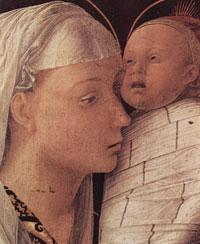 Andrea Mantegna, Presentation in the Temple (detail) Andrea Mantegna, Presentation in the Temple (detail)
|
|
|
|
La Presentazione al Tempio di Giovanni Bellini
|
|
Giovanni Bellini, Presentation at the Temple, 1460-64, tempera on wood, 80 x 105 cm, Fondazione Querini Stampalia, Venice
|
The Presentation at the Temple by the Italian master Giovanni Bellini, dating to c. 1460, is housed in the Fondazione Querini Stampalia, in Venice.
The dating of the work is uncertain, though it is usually considered to be subsequent to the Presentation at the Temple by Andrea Mantegna (Berlin, c. 1455), from which Bellini took a very similar placement of the figures.
The commission of the two works is unknown, as well as if the figures, as is sometimes suggested, portrayed members of the Mantegna and Bellini families.
The main characters are nearly the same than in Mantegna's work: the Virgin is holding the Child, whose feet are lying on a cushion, while the bearded figure of Simeon is coming to take him. In the front is St. Joseph, which, according to some scholars, would be a portrait of Bellini's father, Jacopo. On the sides the painter added two further figures, which make the picture rather crowded. Apart his father, other identifications include the author's self-portrait and Mantegna (or his brother Gentile Bellini) for the two men on the right; and Nicolosia, sister of Giovanni and Gentile, and wife of Mantegna, together with their mother Anna for the women on the left.
Bellini also replaced Mantegna's bronze frame with a parapet, making the characters nearer to the observer, and omitted their haloes.
|
|
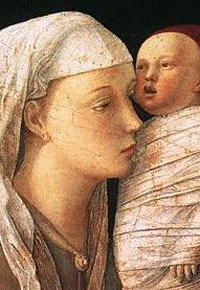
Giovanni Bellini, Presentation in the Temple (detail) |
|
|
| |
Sources
Olivari, Mariolina (2007). "Giovanni Bellini". Pittori del Rinascimento. Florence: Scala. 888117099X.
La Grande Storia dell'Arte - Il Quattrocento, Il Sole 24 Ore, 2005
Kleiner, Frank S. Gardner's Art Through the Ages, 13th Edition, 2008
Manca, Joseph. Andrea Mantegna and the Italian Renaissance, 2006
 |
|
|
[1] Andrea Mantegna was one of the foremost north Italian painters of the 15th century. A master of perspective and foreshortening, he made important contributions to the compositional techniques of Renaissance painting.
Together with Giovanni Bellini, Andrea Mantegna was largely responsible for spreading the ideas of the Early Renaissance in northern Italy.
He studied in Padua under Francesco Squarcione, who also collected and sold antiquities and coins, thus introducing his pupil to this field. But most important for Mantegna’s artistic development was the sculptor Donatello, who from 1443 created the high altar for San Antonio in Padua. From him Mantegna learned how to paint anatomically correct figures, how to achieve precision when tracing details, and not least how to compose a picture with an accurate perspective view.
By 1448, the young painter showed himself almost independent in style when decorating the Ovetary Chapel of the Eremitani Church in Padua (most of it destroyed in World War II).
The Triptych that he painted for the Veronese church of San Zeno (1458) reveals clearly the character of his art. The figures possess a solemn monumental quality and are remarkably faithful to antique statues. Throughout Mantegna’s art both classical architecture and perspective were continuously explored. It was then that Mantegna’s working relationship with his brother-in-law Giovanni Bellini began, which was vitally important to the development of the Renaissance in Northern Italy. (Mantegna was married to Bellini’s sister, Nicolosia).
In 1460, Mantegna became court painter to the Gonzaga family in Mantua. After that he only left Mantua for occasional trips to Tuscany and Rome. Among his most important commissions in Mantua was the decoration of the Reggia, the ducal apartments in the Castello di San Giorgio. Only the frescoes in the Camera degli Sposi – one of the public rooms of Ludovico Gonzaga and his wife – have survived. The loss of the cycles in the other rooms is a reminder of the fragmentary and chance nature of our knowledge of the art and culture of the Early Renaissance.
In about 1490, Mantegna began to produce engravings of great artistic and technical perfection, which contributed greatly to the dissemination of the Early Renaissance innovations north of the Alps.
[2] Giovanni Bellini was initially taught by his father Jacopo Bellini whose icon-like method and manner influenced his early work. When Giovanni’s sister Nicosia married Andrea Mantegna in 1453, close relations between Venice and Padua were established, and Giovanni began to explore the physical and special representation of the Early Renaissance. Under Mantegna’s influence his style assumed temporarily a certain calligraphic precision: Transfiguration (c 1460).
The visit of Antonello da Messina to Venice in 1475/76 seems to have liberated Giovanni’s innermost talents. Without abandoning the rational structure and interaction of form and space, his colors gain in luminosity and depth; modulation of tone increasingly replaces the dividing outline, light floods the canvas. The landscape, as can be seen in many of his representations of the Virgin and Christ and the Pietà, achieved a quality that marks Bellini as the most important Italian landscape painter of the Early Renaisance. His ability to endow his figures with an expression of quiet contemplation while fully conveying movement and human anatomy, remains a secret that raises him above all his contemporaries.
The great works of his late art, in particular his portrayals of the Sacra Conversazione, already cross the border from Early to High Renaissance in the way artistic freedom and convention merge. As teacher of Giorgione and Titian, Giovanni, whom Dürer on his second visit to Venice from 1505 till 1507 still called the greatest painter of his time, was of immeasurable significance for Venetian art in the 16th century. More than 200 of his works survived till our days, among them 50 images of Madonna with Infant.
[3] Mantegna became associated with the preeminent painter family of Venice through his marriage to Nicolasia Bellini, the daughter of Jacopo and sister of Gentile and Giovanni Bellini. Mantegna removed to Mantua, 1460, to serve the Gonzaga court, and remained there for the rest of his career, interrupted by an interlude at Rome, 1488-90, in the service of Pope Innocent VIII. |
|
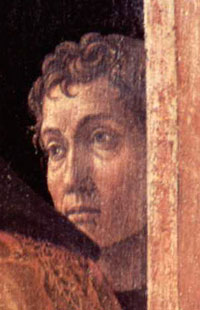 Andrea Mantegna, Presentazione al Tempio dettaglio con il presunto autoritratto giovanile di Mantegna
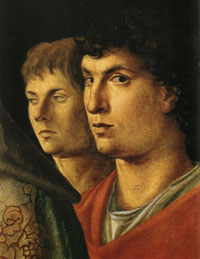
Presunto autoritratto di Bellini nella Presentazione al Tempio |

Ronald Lightbown, Andrea Mantegna, Oxford, 1986.Complete catalogue of the paintings, drawings and prints.
Art in Tuscany | Italian Renaissance painting
Art in Tuscany | Giorgio Vasari's Lives of the Artists | Andrea Mantegna
Giorgio Vasari | Le vite de' più eccellenti architetti, pittori, et scultori italiani, da Cimabue insino a' tempi nostri | Andrea Mantegna
Andrea Mantegna and Giovanni Bellini | Mantegna exhibition at Musée du Louvre, Hall Napoléon | From September 26, 2008 to January 5, 2009 | www.mini-site.louvre.fr/mantegna
The French collections, starting with that of the Louvre, house a noteworthy ensemble of Mantegna's works which were completed by some exceptional loans, from all over the world.
|
This page uses material from the Wikipedia articles Andrea Mantegna, Presentation at the Temple (Mantegna) and Presentation at the Temple (Bellini), published under the GNU Free Documentation License.
Wikimedia Commons has media related to: Andrea Mantegna.
|


Holiday homes in the Tuscan Maremma | Podere Santa Pia
|
| |
|
|
|
|
|
|
|
Podere Santa Pia |
|
Podere Santa Pia, garden |
|
View from terrace with a stunning view over the Maremma and Montcristo |
| |
|
|
|
|
|
|
|
|
|
Santa Trinita a Firenze |
|
Pisa |
|
Siena, Piazza del Campo |
| |
|
|
|
|
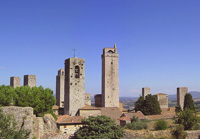 |
|
|
|
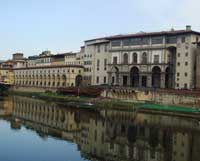
|
San Gimignano |
|
Firenze |
|
Vasari Corridor, Florence |
| |
|
|
| |
|
|
|
|
 |
Podere Santa Pia, The panoramic position in the Tuscan countryside offers great view over the Valle d'Ombrone, the Montecucco area.
To this day the territory of Montecucco has managed to keep its idiosyncrasies, and the amounts of vineyards in the area is in balance with the rest of nature. Lots of the wineries are family run, and many of them still farm the land, breed animals and obviously have their own olive groves. |
| |
|
|
| |
|
|
| |
|
|
| |
|
|
| |
|
|
|
|
|
|

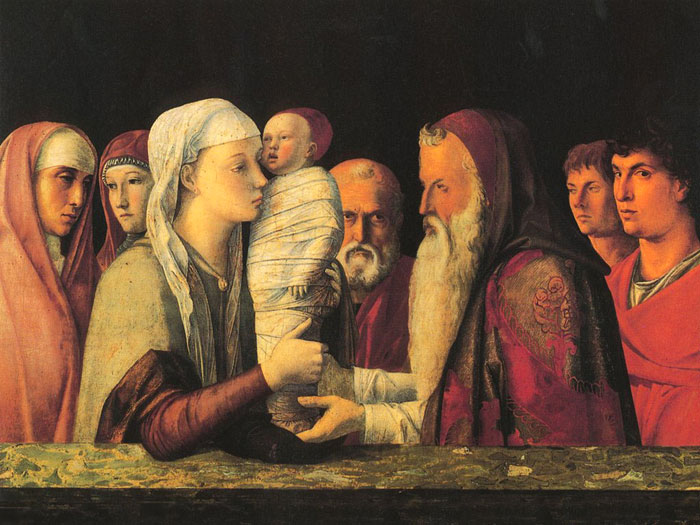




 Andrea Mantegna, Presentazione al Tempio dettaglio con il presunto autoritratto giovanile di Mantegna
Andrea Mantegna, Presentazione al Tempio dettaglio con il presunto autoritratto giovanile di Mantegna


